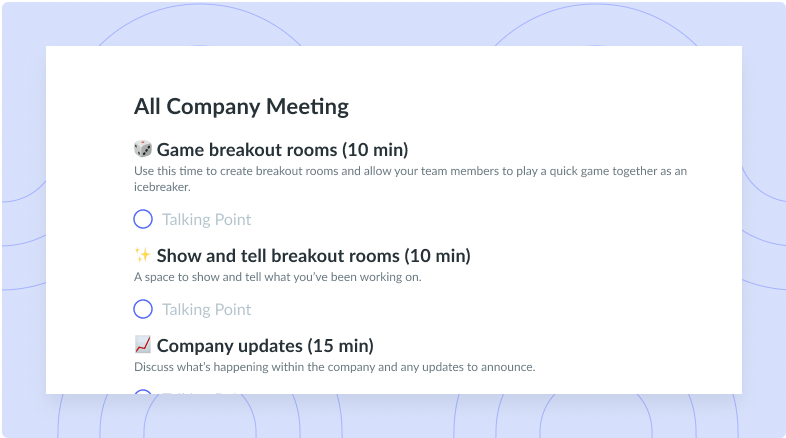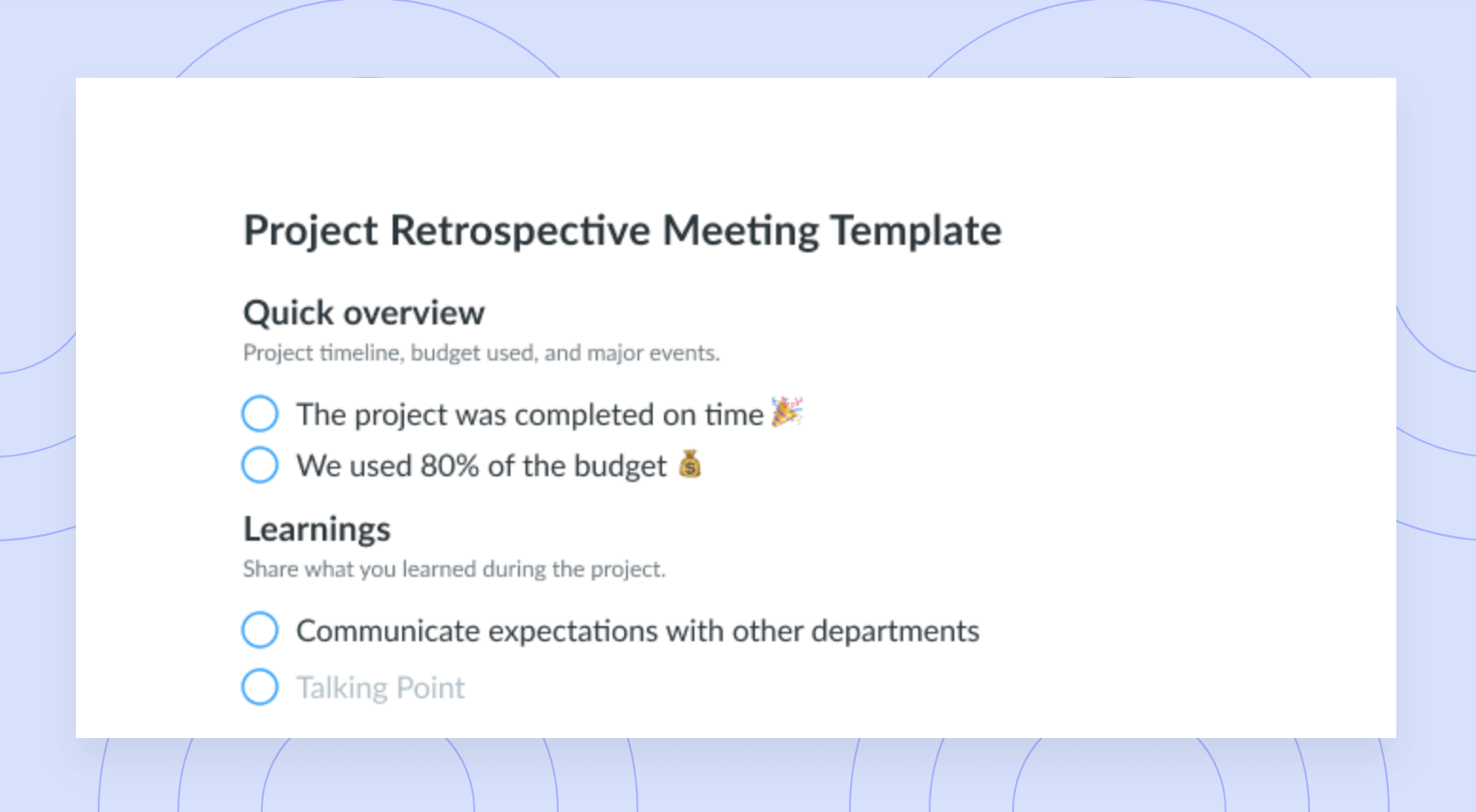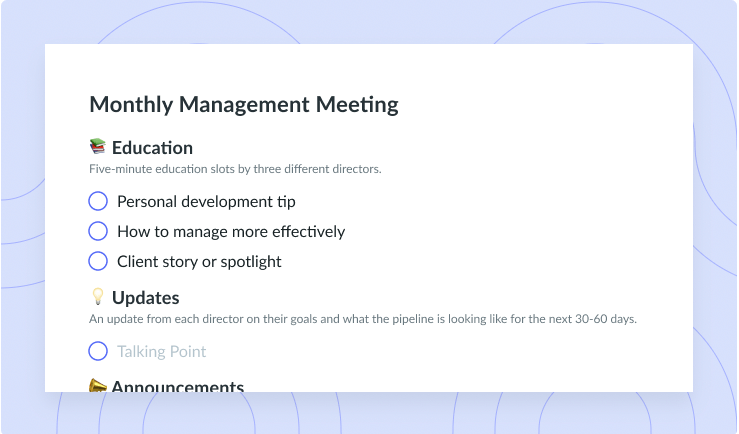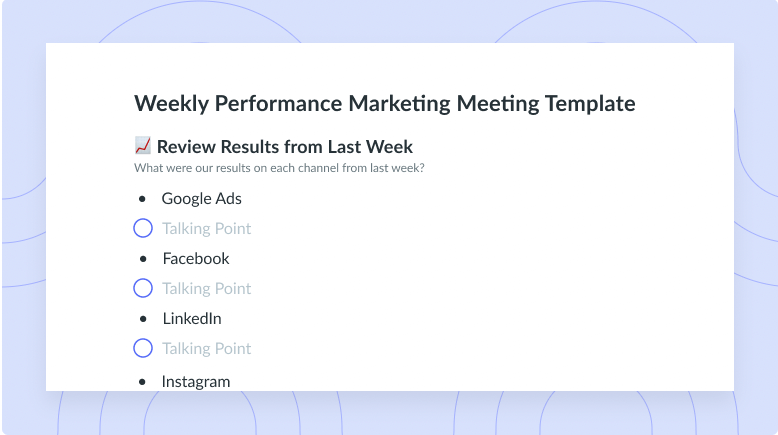Complete Guide to Continuous Performance Management
Learn what’s involved in continuous performance management and why it could help your team. Plus, get a free template!
As your organization evolves, you might find out that improving performance isn’t a one-time event. Continuous performance management can break the process into bite-size pieces that keep everyone, from team members to customers, perfectly happy. Read on to learn exactly what continuous performance management is, how to work it into your organization’s daily structure, and how it benefits everyone.
- What is continuous performance management?
- How do you create a productive performance management strategy?
- 4 benefits of continuous performance management
- How to implement continuous performance management
- Continuous performance management best practices
- What to look for in continuous performance management software
What is continuous performance management?
With continuous performance management, rather than waiting for a mid-year or annual performance review, you’ll regularly give your team real-time feedback. This includes constructive feedback when improvement is needed and celebrating progress and wins. And it’s not just you who does this – your whole team gets in on it, too.
This is a key distinguishing point with continuous performance management. Traditional performance management usually focuses on the relationship between you and one team member, whereas continuous feedback centers the whole team. This can help foster a company culture full of trust. Phil Jacobson, VP Product & Operations at #paid, explains why this approach can be effective.
“Focus on building a feedback-first culture, where it’s normal and encouraged to regularly share constructive and positive feedback,” he says. “With this foundation, your team will feel comfortable voicing problems proactively.”

Run efficient meetings, come to a decision, and get back to work
Level up your meeting habits to boost engagement and productivity with a collaborative meeting agenda. Try a tool like Fellow!

How do you create a productive performance management strategy?
Below are a few key factors to include on your performance management checklist.
1Frequent check-ins
Constant communication is key to continuous performance management. Scheduling regular check-in meetings and starting conversations when things come up can keep you and your team on the same page.
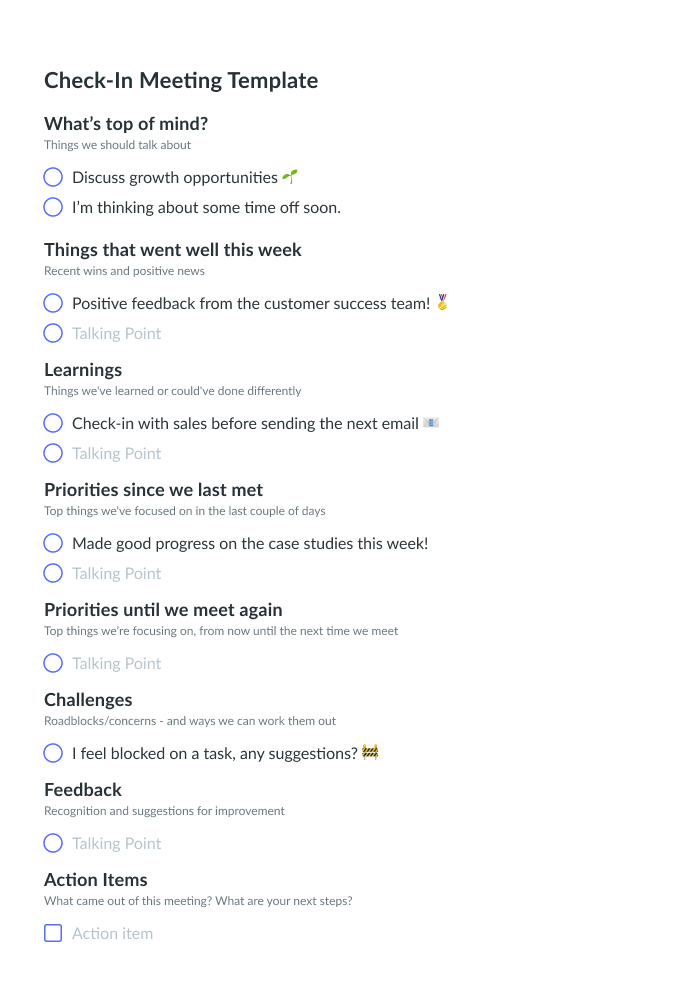
2Team input
Managers are a great resource for feedback, and so are regular ol’ team members. Asking for team opinions on a regular basis can improve everyone’s performance while also helping your team work in harmony.
3Goal-setting
Continuous performance management gives all team members a seat at the table when it comes to setting goals. This way, team members can more easily set their own work goals that align with your organization’s mission and vision statements.
4Seeing improvement in real-time
A continuous performance management system is your best way to get a real-time view of your team’s progress. You can power it with ongoing summary reports that you can lean on to guide all your performance-related conversations. Performance dashboards can also keep things organized for you and your team members. You’ll get top-down views of goals, progress, feedback, and check-in notes.
This means that, with continuous project management, you can analyze progress data as you go. With constant reporting, you can spot positive improvements or see where to make adjustments well before your bottom line takes a hit.
4 benefits of continuous performance management
There are many advantages of continuous performance management. Below are some well-known perks of using it to guide your team.
- Higher team engagement and retention
- Keeping your team in sync
- Happy customers and higher profits
- Increased productivity
1Higher team engagement and retention
Consistent feedback is known to improve employee engagement. In fact, Gallup has found a huge correlation between frequent, meaningful feedback and employee engagement. You can pretty safely assume that more engaged employees are more likely to stick around, too, instead of leaving for another organization. Continuous performance management is a great way to keep your team happy and on board.
2Keeping your team in sync
Since continuous performance management takes a team-centered approach, you can use it to build trust and get everyone aligned. It involves team members at every step of the way so that there are no surprises down the road. It’s a great way to keep everything transparent and help all your team members know where things stand.
3Happy customers and higher profits
Your team’s ideas are a big part of the performance management process, and so is customer feedback. Continuous performance management can give you helpful insights into your customer satisfaction rates – just check your customer feedback as it comes in. The more you have your finger on the pulse of what makes customers happy, the more likely you are to keep your customers around.
4Increased productivity
Team members who have a strong sense of their performance status are more likely to be proactive. Team members who get continuous feedback are often more productive just because they know what to do next and how to support each other. This puts them more in touch with each other – and each others’ needs – than with just a traditional performance review process.
How to implement continuous performance management
You can streamline your new continuous performance management strategy in a few simple steps. Here’s what to keep in mind as you get started.
- Include senior leaders
- Focus on skill development
- Get ready to both give and get feedback
- Tailor to the individual
1Include senior leaders
Transparency at all levels is key to continuous performance management. Senior leaders should be brought in early to help strategize.
2Focus on skill development
Constructive feedback should be all about encouraging your team to learn and grow as much as possible. Center the conversation on how they can build skills rather than just evaluating their work. If you say “here’s what you did wrong,” you should always say “here’s how to do it correctly” too.
3Get ready to both give and get feedback
Giving feedback doesn’t come naturally to everyone, but it is something everyone can learn how to do. You should teach everyone how to give and receive feedback – without taking it personally – that actually helps people learn and grow.
Pro Tip: A healthy and strong culture starts with feedback. Fellow enables your team to share real-time feedback on meetings, projects, and performance.

4Tailor to the individual
All team members have their own learning styles, so guiding team members how they want to be guided is key. You should customize team development plans that can improve team members’ weaknesses while playing to their strengths.
Continuous performance management best practices
Once your team gets going on continuous performance management, you should stick to the below best practices.
- Implement OKRs. Objectives and key results are a great way to streamline performance monitoring since they make it easy to measure goal progress.
- Get help from data. Use concrete data and analytics to guide all performance-related conversations.
- Transition gradually. If continuous performance management is new for you and your team, you should move toward it slowly rather than diving in headfirst. For example, if your team’s annual reviews are just that – annual – try switching to a review every few months at first. After you get used to that, go for weekly reviews and then, eventually, casual daily conversations.
What to look for in continuous performance management software
Continuous performance management can be easier with the help of performance management software. Here are a few tools to look for when deciding which platforms are right for your team.
- Goal-setting. Keep an eye out for software that helps team members set, track, and achieve their individual goals.
- Organizing feedback. Use tools that help you organize peer feedback and comments in one place for a smoother conversation.
- Automating one-on-ones. Schedule recurring one-on-one meetings to regularly chat about performance and easily keep track of all outcomes.
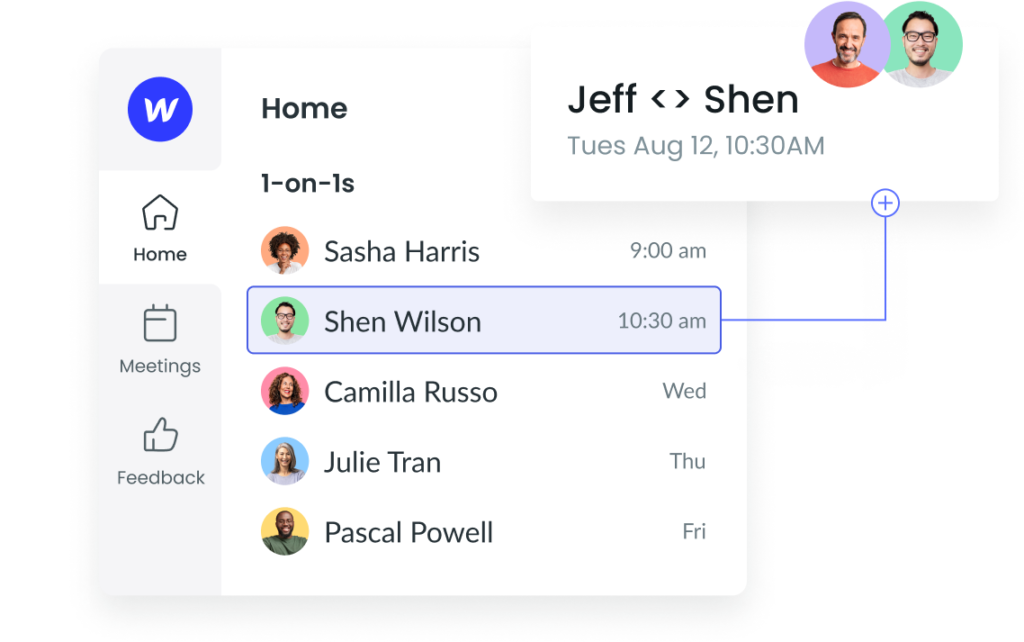
Build a stronger team with continuous performance management
Continuous performance management is a great way to rethink the employee appraisal process. If you’re wondering where to start, Fellow has the tools you need. You can streamline the performance management process with Fellow’s OKR review meeting templates and 360-degree feedback tools. Start exploring how Fellow can help your team get off the ground with continuous performance management today.

![Effective Performance Improvement Plan [+ Free Template]](https://fellow.app/wp-content/uploads/2023/04/Performance-Improvement-Plan3.jpg)


![Product Management OKRs 101 [+ Examples]](https://fellow.app/wp-content/uploads/2022/05/Product-Management-OKR.jpg)

![Performance Review Calibrations: A Complete How-to Guide [+Free Template]](https://fellow.app/wp-content/uploads/2022/10/Performance-Review-Calibrations2.jpg)


